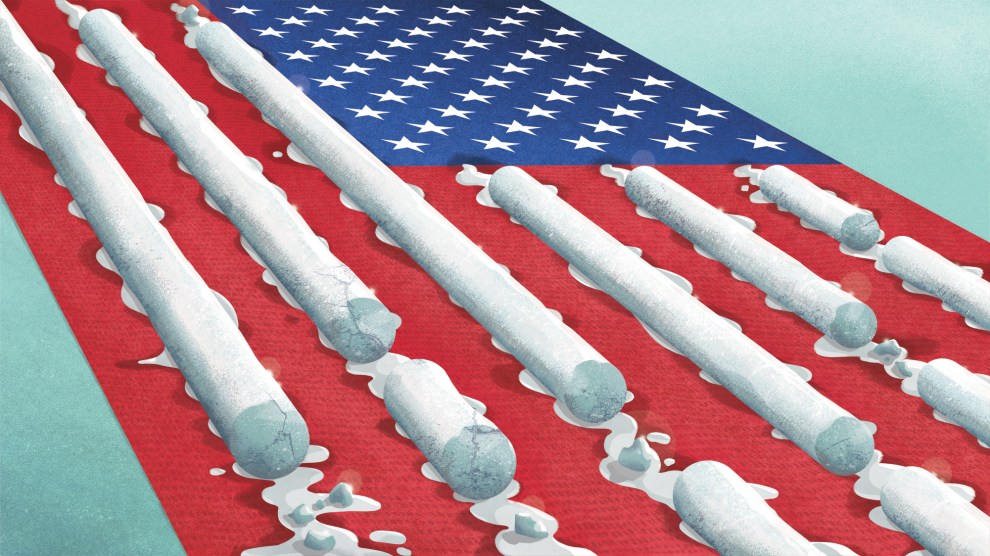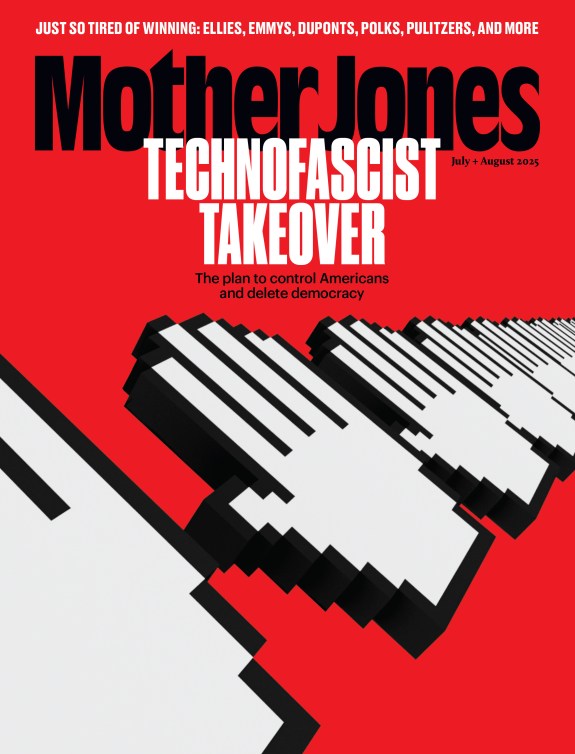 The easiest point to make about John McCain’s recently declared support for offshore drilling is that it is a flip-flop. When McCain ran for president in 1999, he supported the current moratorium on offshore drilling, slated to last until 2012. But speaking in the Washington area on Monday, McCain said, “There are areas off our coasts that should be open to exploration and exploitation, and I hope we can take the first step by lifting the moratoria.” McCain added that drilling “would be very helpful in the short term in resolving our energy crisis.”
The easiest point to make about John McCain’s recently declared support for offshore drilling is that it is a flip-flop. When McCain ran for president in 1999, he supported the current moratorium on offshore drilling, slated to last until 2012. But speaking in the Washington area on Monday, McCain said, “There are areas off our coasts that should be open to exploration and exploitation, and I hope we can take the first step by lifting the moratoria.” McCain added that drilling “would be very helpful in the short term in resolving our energy crisis.”
It’s hard to blame anyone for changing his or her positions on energy issues over the past eight years — markets have changed, America’s energy needs have changed, and prices have certainly changed. Even many Democrats have altered their positions on energy; most are much more supportive of climate change legislation than they once were.
You can blame McCain, however, for switching to the wrong position. Controversy over offshore drilling originated in the United States in 1969, when a cracked sea floor created a huge oil spill near Santa Barbara, California. The danger of a reoccurrence still exists, as do risks associated with having oil tankers routinely servicing offshore rigs. More important, offshore drilling is a band-aid. According to the federal Energy Information Administration, lifting the offshore drilling moratorium would have a minor impact on production and prices:
Mean estimates from the [Minerals Management Service] indicate that technically recoverable resources currently off limits in the lower 48 OCS (Outer Continental Shelf) total 18 billion barrels of crude oil and 77 trillion cubic feet of natural gas….
The projections in the OCS access case indicate that access to the Pacific, Atlantic, and eastern Gulf regions would not have a significant impact on domestic crude oil and natural gas production or prices before 2030. Leasing would begin no sooner than 2012, and production would not be expected to start before 2017. Total domestic production of crude oil from 2012 through 2030 in the OCS access case is projected to be 1.6 percent higher than in the reference case, and 3 percent higher in 2030 alone, at 5.6 million barrels per day. For the lower 48 OCS, annual crude oil production in 2030 is projected to be 7 percent higher—2.4 million barrels per day in the OCS access case compared with 2.2 million barrels per day in the reference case (Figure 20). Because oil prices are determined on the international market, however, any impact on average wellhead prices is expected to be insignificant.
At America’s current consumption rates (20.8 million barrels of oil per day), the oil resources made available from lifting the moratorium would last this country less than two and a half years.
This shouldn’t come as a surprise. The United States has just 3 percent of the world’s oil reserves but consumes 25 percent of the world’s oil. It should be clear we’re not going to get out of this problem on the backs of our own oil rigs. Temporary solutions such as lifting the moratorium and drilling in the Arctic National Wildlife Refuge (which McCain opposes) only bolsters the illusion that America’s long-term energy problems can be solved through achieving fossil fuel-based energy independence. That’s a pernicious myth, and one that inhibits real progress.
This isn’t the only way John McCain’s environmentally friendly rhetoric (“Our environment [is] in peril,” begins a recent McCain ad on global warming) is undermined by his actions. While he has pushed legislation that would curb emissions, he has skipped votes that would raise fuel standards for cars, and in July 2003 he voted against a Democratic proposal that sought to raise mileage standards on cars and some trucks to 40 mpg by 2015. He has repeatedly opposed tax breaks that would encourage the development of alternative energies, and once missed a vote that would fund tax credits for renewable energy by eliminating massive tax breaks to oil companies. For these reasons and others, environmental groups give him miserably low ratings.
McCain obviously believes that supporting offshore drilling will help his campaign among voters struggling with high gas prices. But there might be a political cost: Florida. No Republican has ever been elected to statewide office in Florida, where offshore drilling is unpopular, without endorsing the moratorium. That includes Governor Charlie Crist and Senator Mel Martinez, both McCain supporters. Any liberal advocacy group with a few extra bucks and a desire to push a crucial swing state toward Obama just got hand-delivered an attack ad.
And this isn’t the only position McCain has taken that is going to hurt him in Florida. When he visited the state recently, he was attacked by Democrats for voting against a bill that supported hundreds of water projects around the country, including billions of dollars for everglades restoration. McCain argued that he voted against the bill because it was laden with pork, but that he would support a everglades-specific bill. And earlier this month Florida Democrats unveiled www.hurricanemccain.com, a site devoted to publicizing McCain’s opposition to a national catastrophe fund. The fund, supported by both Florida Democrats and Republicans, would relieve the insurance burden borne by residents of states hit heaviest by natural disasters like hurricanes.
McCain’s support for offshore drilling isn’t just the wrong choice for the environment and for America’s long-term energy policy. It’s politically stupid. John McCain had every reason possible to make the right choice and he made the wrong one.
















